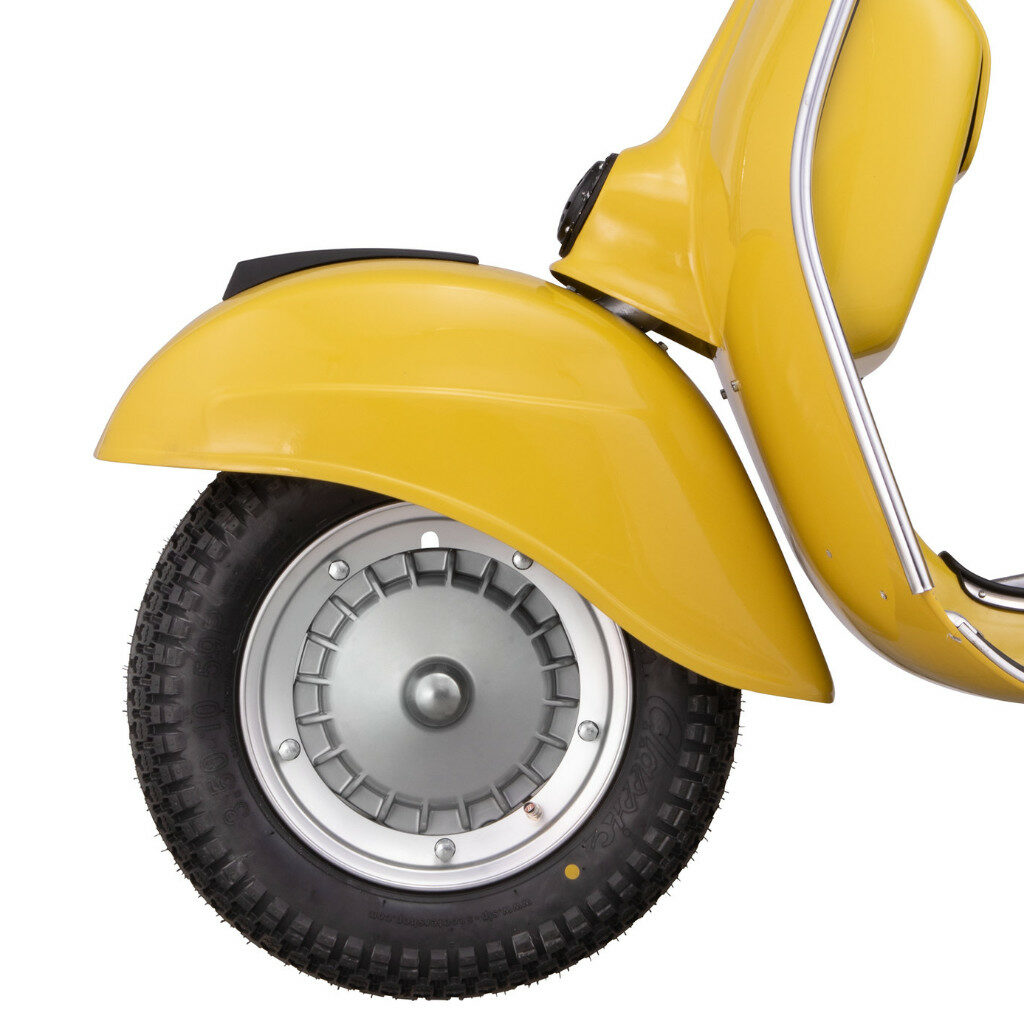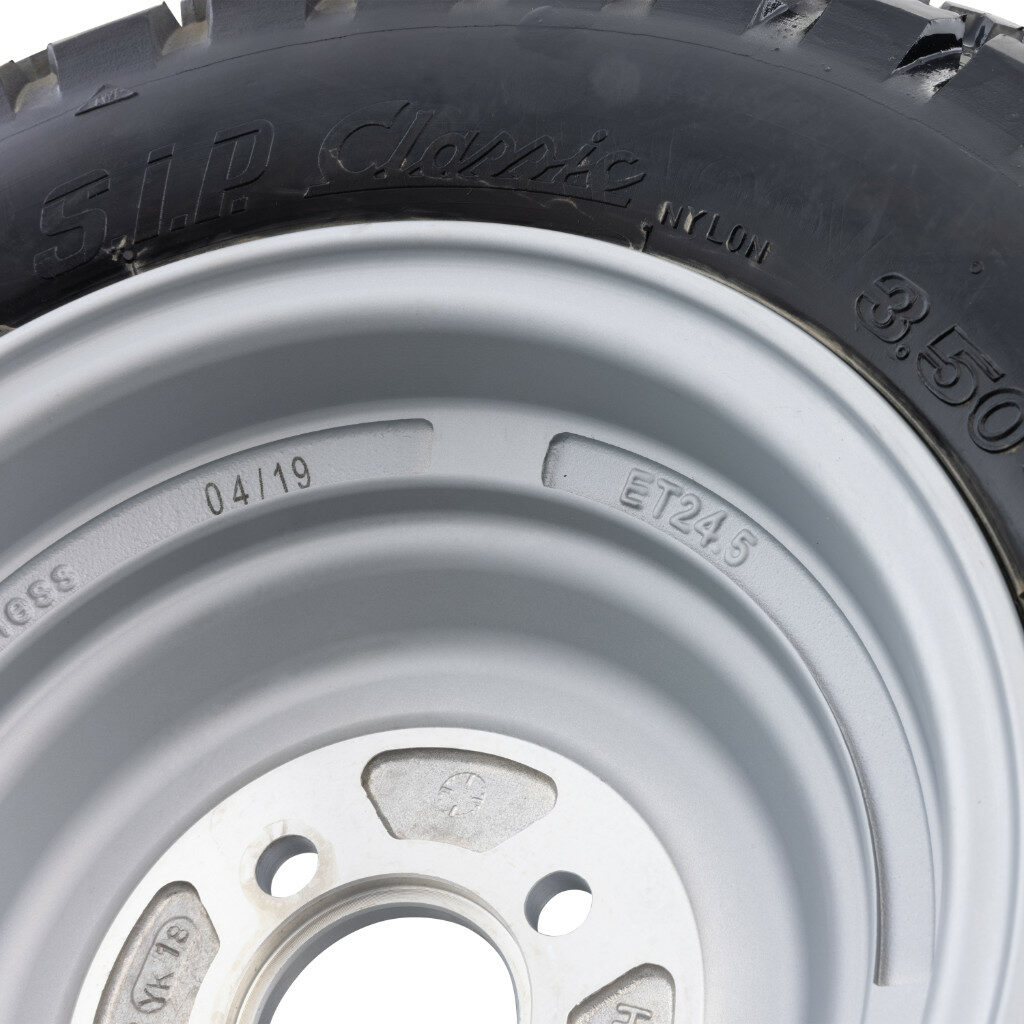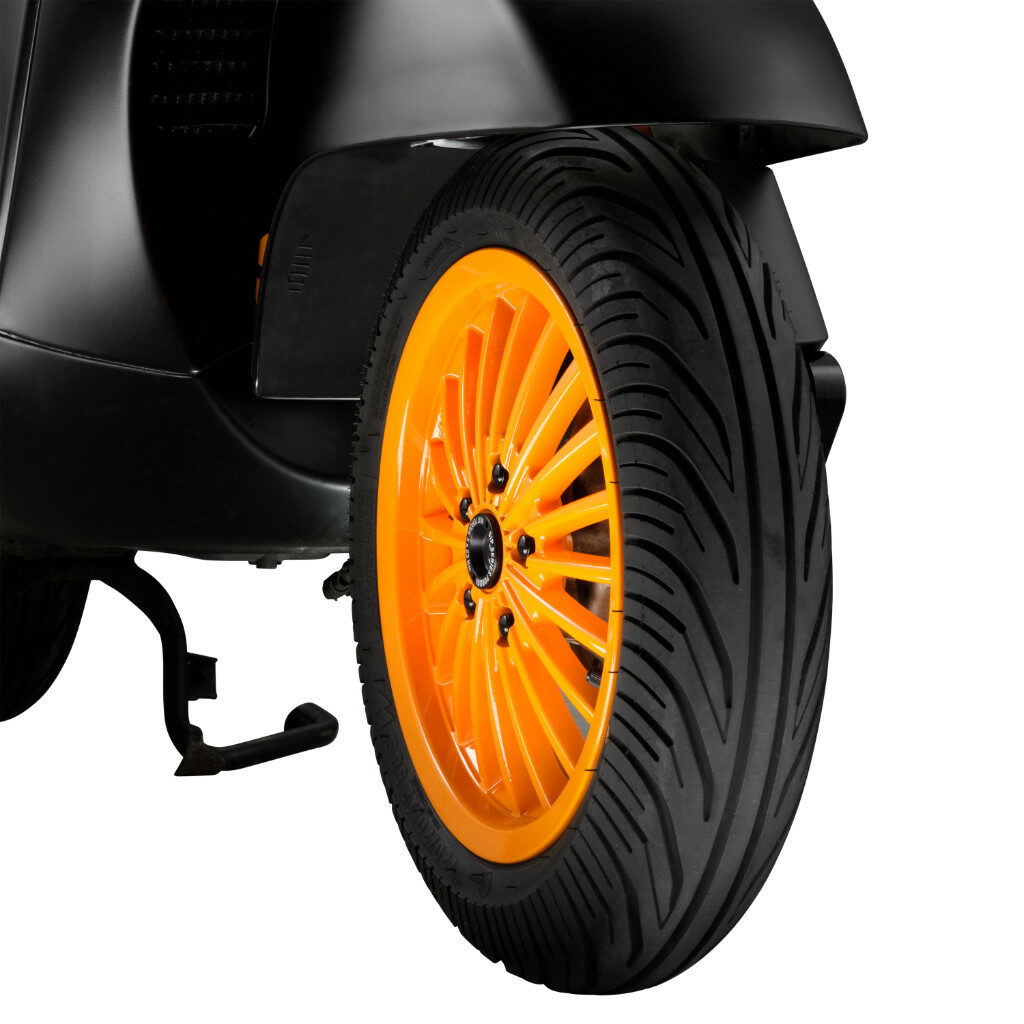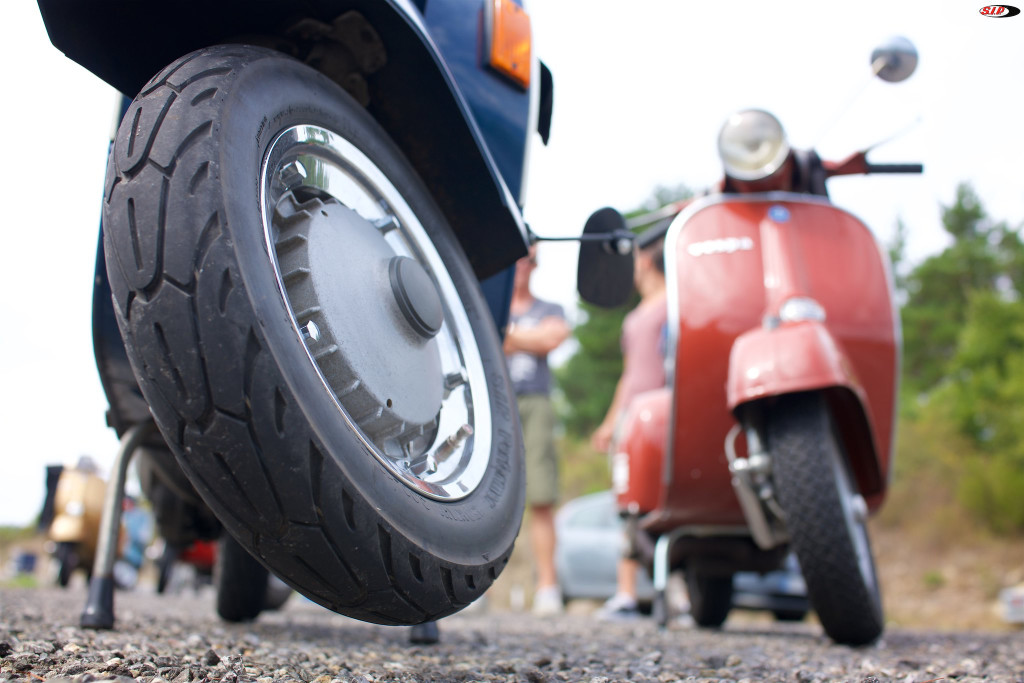As is well known, the Vespa was developed under difficult conditions after the Second World War. Material shortages and a lack of production capacity forced engineer Corradino D`Ascanio to develop a minimalist vehicle.
Since it had to be usable on the war-torn roads, his goal was to be able to change the tyre as quickly and easily as on a car.
This resulted in the two-part rim, which is still unique today. This enables the rider to change the tyre with a minimum of tools. In addition, the same tyre sizes were installed at the front and rear, so that the spare wheel carried can be fitted in both cases without any problems.
Caring for the tyres
However, in order to prevent this from happening in the first place, it is advisable to maintain the scooter tyres at regular intervals. For this purpose, it is advisable to use special products from the automotive sector. Coarse dirt can be easily washed off, which significantly prolongs the tyre’s service life. For light dirt, a mixture of warm water and a little detergent often helps. A clean tyre on a Vespa is the well-known icing on the cake of care and provides an eye-catcher or two at the next ice cream parlour.
Proper Vespa tyre care always includes checking the inner tube. This hardens over time and becomes much more sensitive. If in doubt, it is better to change the tube too early than too late. Inner tubes are available at very low prices and in many cases prevent punctures. When fitting, Vespa riders should always have a can of fitting paste ready. This prevents the tube from sticking to the inside of the tyre. It should go without saying that the respective tyre pressure must be reached afterwards.
It is also important to increase the tyre pressure by about 25% before winter storage. This prevents the well-known “flat tyre”. However, it is even better to jack up the scooter so that neither tyre touches the ground. Alternatively, the Vespa can be moved a short distance at regular intervals. If, on the other hand, the Vespa stands in the same place all winter, it is quite likely that the tyre will become deformed. This leads to a drastic loss of riding comfort and safety.
Changing tyres – child’s play
As mentioned at the beginning, it was the deliberate aim of the developers to be able to change the tyre easily. This is still the case with the older models. For the front wheel, it is sufficient to loosen the five M8 nuts to be able to remove the tyre. Removing the rear wheel is just as easy. Even though the brake drum may be a little confusing for Vespa newcomers, it does not hinder the removal of the tyre. Here, too, only the five nuts need to be loosened in order to remove the tyre from the axle. If the brake drum is also to be removed, the cotter pin must also be driven out and the axle nut unscrewed.
These instructions refer to Small, Large and Wideframe models up to the PK and PX series. Subsequently, the two-piece rim was dispensed with and tubeless rims were used.
Since a wide variety of rims were fitted up to the current models, we will not go into more detail here.



Different types of tyres
When choosing new tyres, there is also a lot to consider. The range of new tyres is now wide. In addition to classic tyres, there are currently sports, cross, all-weather or white wall tyres.
The size of the rim must be taken into account. This information consists of two separate pieces of information. In front of the dash is the nominal width of the tyre, followed by the corresponding size in inches.
Almost exclusively 3.00-10 tyres were fitted to the smallframe series. The exception here is the early 50 N, L and R models, on which the size 2.75-9 was fitted. The division in the other two series is similar. The early Wide- and Largeframe models were delivered with 3.75-8, from the 1960s onwards only the size 3.50-10 was fitted.
This size number is in each case also provided with a speed or load capacity index. This refers to the maximum speed of the respective scooter and may not be undercut under any circumstances. Exceeding it, on the other hand, is not a problem.
To ensure that nothing stands in the way of the upcoming Vespa season, it is advisable to have another quick tyre check. Just like the motto: “Fits, fits, wobbles and has air!




Comments (1)